DÙNG ÁN LỆ LIÊN HIỆP QUỐC ĐỂ CỨU VIỆT NAM
THOÁT NẠN TẦU CỘNG XÂM LƯỢC
Leaders of the five permanent member states at a summit in 2000. Clockwise from front left Chinese President Jiang Zemin, U.S. President Bill Clinton, British Prime Minister Tony Blair, Russian President Vladimir Putin, and French President Jacques Chirac.
Các nhà lãnh đạo trong năm nước hội viên thường trực Liên Hiệp Quốc tại hội nghị thượng đỉnh năm 2000. Theo chiều kim đồng hồ từ phía trước bên trái Chủ tịch Trung Quốc Giang Trạch Dân, Tổng thống Mỹ Bill Clinton, Thủ tướng Anh Tony Blair, Tổng thống Nga Vladimir Putin và Tổng thống Pháp Jacques Chirac.
Xem thêm: Trung Quốc và Liên Hợp Quốc, Pháp và Liên Hợp Quốc, Nga và Liên Hợp Quốc, Liên Bang Xô Viết và Liên Hợp Quốc, Vương quốc Anh và Liên Hợp Quốc, Hoa Kỳ và Liên Hiệp Quốc
The Security Council's five permanent members have the power to veto any substantive resolution:
Năm thành viên thường trực của Hội đồng Bảo an có quyền phủ quyết bất kỳ nội dung tranh chấp nào:
1- (Trung Hoa Đài Loan bị Tầu Cộng thay thế ngày 15/11/1971 tại Liên Hiệp Quốc )
The People's Republic of China replaced Taiwan in the UN on 15 Nov 1971.The U.S. switched recognition from Taiwan to the People's Republic of China on 1 Jan 1979.
2- (Cộng Sản Liên Bang Xô Viết bị đánh “Xẹp Hết Cứu Nổi” phải nhường nước cho dân Nga ngày 25/12/1991).
The Union of Soviet Socialist Republics (USSR) was formally dissolved on December 25, 1991. This left all fifteen republics of the Soviet Union as independent sovereign states. The dissolution of the world's first and largest Communist state also marked an end to the Cold War.
3- Chính Phủ Quốc Gia Việt Nam Lâm Thời cũng sẽ dẹp bỏ chế độ và cái gọi là “Nhà Nước CHXHCNVN” tại Liên Hiệp Quốc bằng phương pháp khoa học và quốc tế vận chứ không cần phải gây chiến tranh đổ máu).
The same method of legal capacity, you support the provisional national government of Vietnam at the United Nations demanding justice in the UN Charter to replace the red flags of Vietnam Communist by the yellow flag of Vietnam National wisely, bloodless, that Vietnamese people are rich and powerful democracy. You solidarity with the provisional national government of Vietnam to relief your country is your great credit.
Cùng dùng phương thức hợp pháp này, qúy vị yêu nước Việt Nam ủng hộ Chính Phủ Quốc Gia Việt Nam Lâm Thời tại Liên Hiệp Quốc đòi hỏi sự công bằng trong Hiến Chương LHQ để thay cờ vàng chính nghĩa vào chỗ cờ đỏ Việt Cộng tay sai Tầu Cộng một cách khôn ngoan, không đổ máu, mà dân Việt được có Dân Chủ và giầu mạnh. Quý vị đoàn kết với CP QGVNLT thì đại công cứu nước là của quý vị.
Sau khi DNA chứng minh được Hồ Chí Minh là người Tầu, giả mạo người Việt Nam tên Nguyễn Ái Quốc đểlập đảng CSVN làm tay sai Tầu Cộng và cầm đầu cái gọi là “CP/CHXHCN/VN”thì cái “Chính Phủ” Việt Cộng do Tầu ngụy tạo, không do dân Việt bầu lên này sẽ mất chính danh, không đủ tư cách đại diện cho nước Việt Nam tại Liên Hiệp Quốc. Lúc đó Chính Phủ Quốc Gia Việt Nam Lâm Thời (CPQGVNLT) do ba thế hệ Việt Nam khai sinh tạm thay thế cho đến khi có 1 Chính Phủ Quốc Gia Hợp Pháp do toàn dân Việt bầu lên, sẽ chính thức đại diện cho Việt Nam tại Liên Hiệp Quốc. Cờ vàng chính nghĩa sẽ thay thế cờ máu sao vàng. Việt Cộng phải giải thể cho khỏi đổ máu, nhưng được CPQGVNLT khoan hồng cho Việt Cộng giữ tính mạng, danh dự và tài sản hợp pháp. Người Việt yêu nước nghĩ sao?
Năm thành viên thường trực (còn được gọi là P5 hoặc Big 5) đã được rút ra từ các cường quốc chiến thắng trong Thế chiến II, và do sáng lập của Liên Hợp Quốc vào năm 1946, Hội đồng Bảo An gồm Pháp, Cộng hòa Trung Quốc, Vương quốc Anh, Hoa Kỳ và Liên Xô. Đã có hai thay đổi ghế (Trung Cộng và Nga) kể từ đó, mặc dù không được phản ánh trong Điều 23 của Hiến chương Liên Hợp Quốc vì nó đã không được sửa đổi cho phù hợp:
- [1]China's seat was originally filled by the Republic of China, but due to the stalemate of the Chinese Civil War in 1949, there have been two states claiming to represent China since then, and both officially claim each other's territory. In 1971, the People's Republic of China was awarded China's seat in the United Nations by UN General Assembly Resolution 2758, and the Republic of China (based in Taiwan) soon lost membership in all UN organizations.
Ghế của Trung Quốc tại Liên hiệp Quốc đã do Chính Phủ Cộng hòa Trung Quốc(Taiwan-Đài Loan) chiến giử. Nhưng do sự bế tắc của cuộc nội chiến Trung Quốc vào năm 1949, đã có 2Chính Phủ tự xưng đại diện cho Trung Quốc kể từ đó, và cả hai đã chính thức tuyên bố 2 lãnh thổ khác nhau: Đài Loan và Trung Cộng. Năm 1971, Chính Phủ Cộng Hòa Nhân dân Trung Quốc (Trung Cộng) đã được trao ghế đại diện của Trung Quốc tại Liên Hiệp Quốc do Nghị quyết số 2758 và Chính Phủ Cộng hòa Trung Quốc (Đài Loan) bị mất ghế thành viên trong các tổ chức của Liên Hợp Quốc từ đó.
- [2]Russia, being the legal successor state to the Soviet Union after the latter's collapse in 1991, acquired the originally-Soviet seat, including the Soviet Union's former representation in the Security Council.
Sau khi Liên Bang Sô Viết (Liên Xô)sụp đổ vào năm 1991, Nga là Chính Phủ kế tục pháp lý cho Liên Xô,đã thế chỗ ban đầu của Liên Xô, trong đó có đại diện cũ của Liên Xô trong Hội đồng Bảo an. Cờ Nga đá chính thức thay thế cờ Liên Xô tại Liên Hiệp Quốc ngày 01/11/1991 cho đến hiện nay.
- [3] Currently, the so-called "State Socialist Republic of Vietnam" blood flag is used to represent the country and people of Vietnam to the United Nations. But "The State" by the Vietnam Communist Party leader, not elected by the Vietnamese people, are doing the wrong hands of the Chinese Communist Party (CCP), the act of harm, oppression Vietnam, should be replaced by 1 democratic government elected by the people of Vietnam. Currently the Provisional National Government of Vietnam by 3 generations of birth, is taking the voice of the people to justice denied Vietnam representative of the so-called "State Socialist Republic of Vietnam", a robbery disguised as one party, are selling land, harm people. The Vietnam patriots want to speak together or not?
Hiện nay cái gọi là “Nhà Nước Cộng Hòa Xã Hội Chủ Nghĩa Việt Nam” đang dùng lá cờ máu để đại diện cho nước và nhân dân Việt Nam tại Liên Hiệp Quốc. Nhưng “Nhà nước” này do đảng Cộng Sản Việt Nam cầm đầu, không do dân Việt bầu ra, đang làm tay sai của Trung Cộng, lại có hành động hãm hại, đàn áp dân chúng, nên phải bị thay thế bằng 1 Chính Phủ dân chủ do toàn dân bầu lên. Hiện tại Chính Phủ Quốc Gia Việt Nam Lâm Thời do 3 thế hệ Việt Nam khai sinh, đang cất tiếng nói công lý của nhân dân để phủ nhận tính đại diện Việt Nam của cái gọi là “Nhà Nước Cộng Hòa Xã Hội Chủ Nghĩa Việt Nam” là 1 đảng cướp trá hình, đang bán nước, hại dân. Các nhà ái quốc Việt Nam có muốn cùng nhau lên tiếng hay không?
USED verdict of the United Nations to save VIETNAM from China invaded
The United Nations Security Council 's five permanent members have the power to veto any substantive resolution:
The five permanent members (also known as the P5 or Big 5) were drawn from the victorious powers of World War II, and at the UN's founding in 1946, the Security Council consisted of France, the Republic of China, the United Kingdom, the United States, and the USSR. There have been two seat changes since then, although not reflected in Article 23 of the Charter of the United Nations as it has not been accordingly amended:
- [1]China's seat was originally filled by the Republic of China, but due to the stalemate of the Chinese Civil War in 1949, there have been two states claiming to represent China since then, and both officially claim each other's territory. In 1971, the People's Republic of China was awarded China's seat in the United Nations by UN General Assembly Resolution 2758, and the Republic of China (based in Taiwan) soon lost membership in all UN organizations.
- [2]Russia, being the legal successor state to the Soviet Union after the latter's collapse in 1991, acquired the originally-Soviet seat, including the Soviet Union's former representation in the Security Council.
-
Leaders of the five permanent member states at a summit in 2000.
Leaders of the five permanent member states at a summit in 2000. Clockwise from front left Chinese President Jiang Zemin, U.S. President Bill Clinton, British Prime Minister Tony Blair, Russian President Vladimir Putin, and French President Jacques Chirac.
See also: China and the United Nations, France and the United Nations, Russia and the United Nations, Soviet Union and the United Nations, United Kingdom and the United Nations, and United States and the United Nations -
Prime Minister Quan Minh Dao and Honorable USA Deligators
Prime Minister Quan Minh Dao and Honorable USA Deligators Mr. Dao be introduced as Hon. Prime Minister of VN Prime Minister Dao addressing among the dignified Republicans Prime Minister Dao addressing at Nixon library
The Security Council's five permanent members have the power to veto any substantive resolution: -
Prime Minister Dao addressing among the dignified Republicans
The People's Republic of China replaced Taiwan in the UN on 15 Nov 1971. The U.S. switched recognition from Taiwan to the People's Republic of China on 1 Jan 1979. The Union of Soviet Socialist Republics (USSR) was formally dissolved on December 25, 1991. This left all fifteen republics of the Soviet Union as independent sovereign states. The dissolution of the world's first and largest Communist state also marked an end to the Cold War.
REMARK:
1/ The Republic of China was formally established on 1 January 1912 following the revolution of Wuchang Uprising on 10 October 1911. From its founding and until 1949 it encompassed mainland China (including Tibet and Outer Mongolia). Central authority waxed and waned in response to warlordism (1915–28), Japanese invasion (1937–45), and the Chinese Civil War (1927–49), with central authority strongest during the Nanjing Decade (1927–37) when most of China came under the control of the Kuomintang (KMT). At the end of World War II in 1945, with the surrender of Japan, the Republic of China took over the island groups of Taiwan and Penghu from the Japanese Empire.
The Communist takeover of continental China in the Chinese Civil War in 1949 and later Hainan, Tachen and other outlying islands in the 1950s left the ruling Kuomintang (KMT) with control over only Taiwan, Penghu, Kinmen, Matsu, and other minor islands. The KMT declared Taipei the provisional capital.[14] On the other hand, the Communist Party of China took over all of mainland China[15][16] and founded the People's Republic of China in Beijing, leading to two rival governments claiming to be the sole legitimate government of China. However, until the 1970s the ROC was still recognized by many countries and the United Nations as the sole legitimate government of both mainland China and Taiwan. The ROC had been a founding member of the United Nations[17] and one of the five permanent members of the Security Council until 1971, when China's representative was replaced by the PRC via UN General Assembly Resolution 2758.
2/ The Russian Provisional Government (Russian: Временное правительство России, Vremennoye pravitel'stvo Rossii) was the short-lived administrative body which sought to govern Russia immediately following the abdication of Tsar Nicholas II in March 1917 (Nicholas' manifest of abdication).[2][3] On September 14, the State Duma of the Russian Empire was officially dissolved by the newly created Directorate, and the country was declared the Russian Republic (Russian: Российская республика, Rossiyskaya respublika). It is also sometimes known as the "Kerensky Government" after its most prominent leader. It lasted approximately eight months, and ceased to exist after power in Russia was transferred to the Soviets by the Bolsheviks in October 1917.
When the authority of the Tsar's government began disintegrating after the February Revolution of 1917, two rival institutions, the Duma and the Petrograd Soviet, competed for power. Tsar Nicholas II abdicated on March 2 (Julian calendar) and nominated his brother, Grand Duke Michael as the next tsar. Grand Duke Michael did not want to take the poisoned chalice[7] and deferred acceptance of imperial power the next day. Legal authorization for the transfer of power was given by a proclamation signed by Grand Duke Michael. The Provisional Government was expected to rule until the Constituent Assembly later determined the form of government in Russia. The Provisional Government was designed to set up elections to the Assembly while maintaining essential government services, but its power was effectively limited by the Petrograd Soviet's growing authority.
The Soviet Union was founded in December 1922 when the Russian SFSR, which formed during the Russian Revolution of 1917 and emerged victorious in the ensuing Russian Civil War, unified with the Transcaucasian, Ukrainian and Belorussian SSRs. After the death of Vladimir Lenin, the first Soviet leader, power was eventually consolidated by Joseph Stalin,[4] who led the country through a large-scale industrialization with command economy and political repression.[4][5] During World War II, in June 1941, the Soviet Union was attacked by Germany, a country it had signed a non-aggression pact with. After four years of warfare, the Soviet Union emerged as one of the world's two superpowers, extending its influence into much of Eastern Europe and beyond.
The Soviet Union and its satellites from the Eastern Bloc were one of two participating factions in the Cold War, a global ideological and political struggle against the United States and its allies; the Soviet bloc ultimately lost, however, having been hit by economic standstill and both domestic and foreign political unrest, an event which marks the beginning of the post-war period.[6][7] In the late 1980s the last Soviet leader Mikhail Gorbachev tried to reform the state with his policies of perestroika and glasnost, but the Soviet Union collapsed and was formally dissolved in December 1991 after the abortive August coup attempt.[8] Since then the Russian Federation has been exercising its rights and fulfilling its obligations.[9]
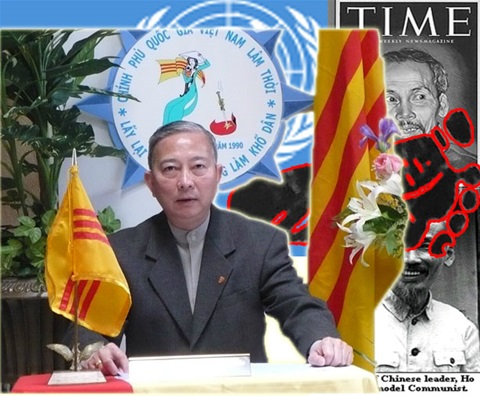
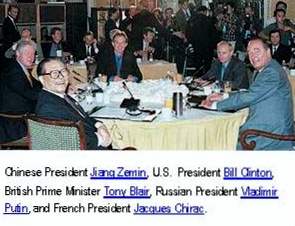

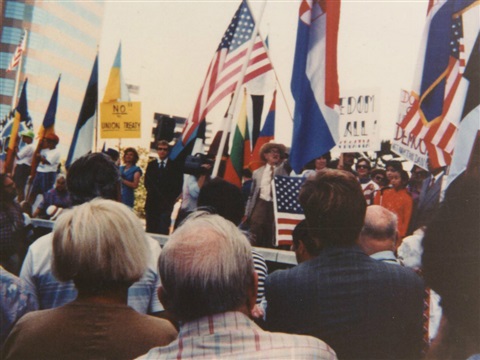
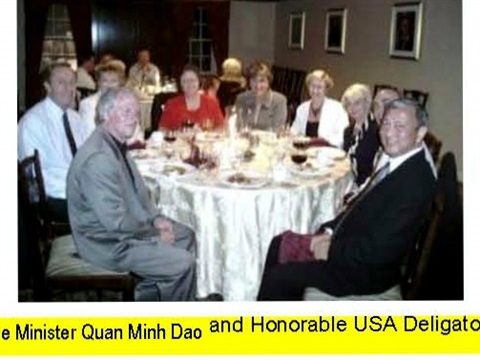
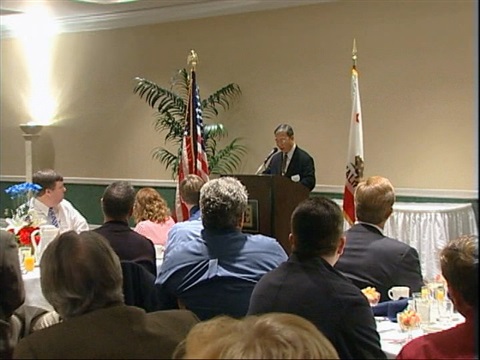

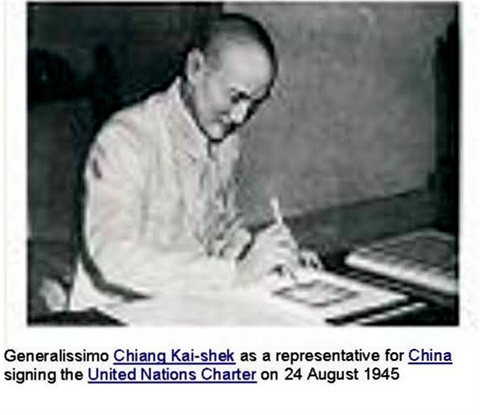
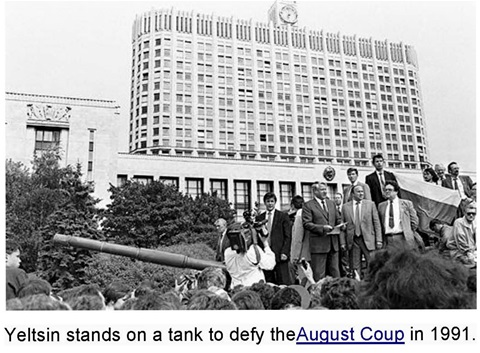
Nhon hoang
Chiến lược lấy lại VN của Ô.ĐMQ rất thông minh và logic, tuy nhiên chưa biết xác suất thành công sẽ như thế nào, bởi vì có nhiều yếu tố khách quan bao quanh (người dân quốc nội; mở lại hiệp định 1973)